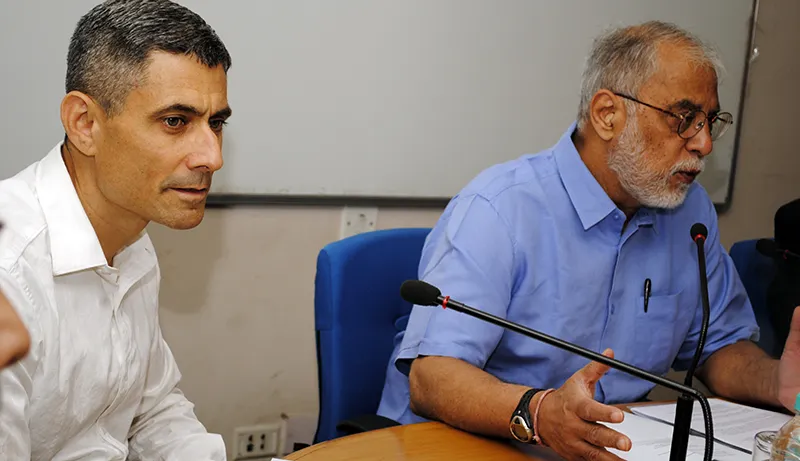Given India's high stakes in the Indian Ocean, it is important for it to ponder the possibility of using both soft and hard power resources to create dependencies for the other countries, and the same time, seek possibilities to engage with China.

As China’s influence continues to spread in the Indian Ocean region, the new government in New Delhi is confronted with the complex task of dealing with this challenge and protecting India’s interests in the region. In order to understand the different dynamics of China’s growing interest and presence in the region, Observer Research Foundation organised a seminar on the "Strategic Implications of China’s Presence in the Indian Ocean" on May 20, 2014.
The speakers at this seminar included Dr Paul Kapur, Professor, US Naval Postgraduate School and Vice Admiral (Retd.) Anup Singh, former Commander-in-Chief, Eastern Naval Command. The session was chaired by Dr Manoj Joshi, Distinguished Fellow, ORF.
In his introductory remarks, Dr. Joshi said that the Indian Ocean region is being taken more seriously by the Chinese leadership and has been incorporated into its naval policy. China’s commercial interests and desire to send a signal to the rest of the world about its naval capability have been strong factors in shaping the Chinese attitude.
Dr. Joshi also highlighted the history and geography of the region, noting the role of the Chola dynasty in the 8th-13 century and that in recent times the Indian position was that foreign navies should leave the Indian Ocean which would mean that India would be the dominant nation. China used to have some pattern of control over the region during the Yuan and Ming Dynasty and now with its developing economic interests, it may want to play a larger role again.
Dr. Kapur gave a presentation on the US perspective of the Indian Ocean. The United States has a huge interest in the Asia Pacific. Besides the inherent qualities such as the young demographics, booming economy and abundant resources, the future of Asia is far from certain. There is no robust multilateralism, but a lot of unsettled territorial disputes in the region. The US sees itself as a public good provider, but the rising profile of China is a threat to US interests in the region. In this context, it may see India rather than China as a potential partner due to the similarities in the political models followed in both countries.
VADM Anup Singh analysed China’s intention and action in the region. He said China’s interests in Indian Ocean mainly come from a need for energy. Its manufactory-based economy requires huge amount of oil. In the past decade, it has put a lot of effort in building ports and enhancing transportation, and the Indian Ocean plays a crucial role in this transportation of oil. The need to protect this supply route necessitates the presence of a massive Chinese Navy force in the region on a long-term basis. Although the presence of the Chinese Navy may be motivated by legitimate concerns, its recent behavior at the South China Sea drives people to question its motives.
VADM Anup Singh said China’s gaining superiority, irrespective of its intentions, in the Indian Ocean region is a natural concern for India. It is no surprise then that New Delhi appreciates the US presence in the region as a possible balancing power. However, at the same time, there seems to be some degree of ambiguity regarding the US intentions vis-à-vis the region. Thus, given the high stakes, it is important for India to ponder the possibility of using both soft and hard power resources to create dependencies for the other countries, and the same time, seek possibilities to engage with China.
(This report is prepared by Zhonghe Zhu, Research Intern, Observer Research Foundation, Delhi)
The views expressed above belong to the author(s). ORF research and analyses now available on Telegram! Click here to access our curated content — blogs, longforms and interviews.




 PREV
PREV

